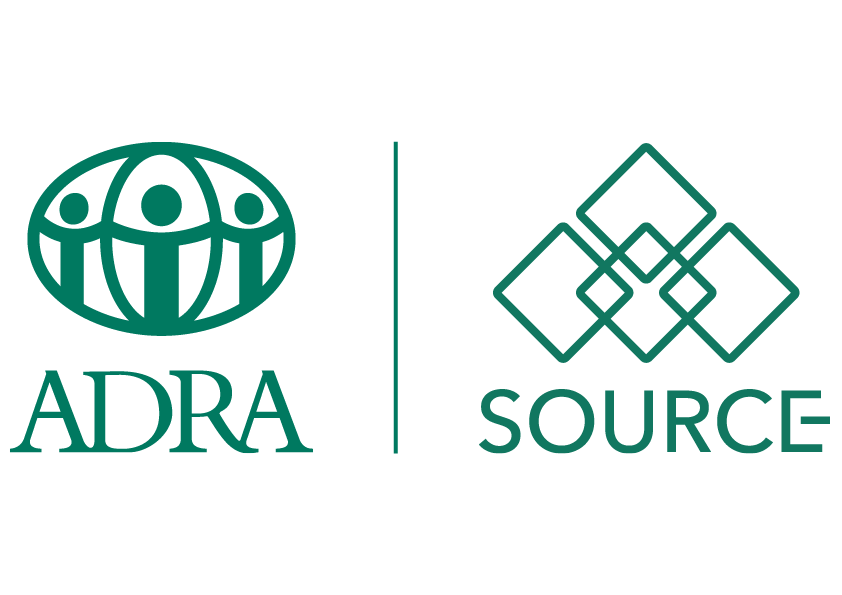If you are using a WordPress website, it is important to keep your plugins and themes up-to-date. When updating, it is wise to do a full backup first and leave it a few days to make sure there aren’t any issues with the update versions first releases.
Not sure how to do this? Here’s a 6 step guide with screenshots to help you on your way.
STEP ONE: DO A FULL BACKUP
ALWAYS backup the full site before running updates. To do this in the WordPress dashboard, go to the top menu on the left of your screen and select “UpDraft” and then “Backup / Restore” from the dropdown menu.

Sometimes you will see the popup message at the top of the screen “Delete Old Directories”. Typically you will need to do this before being able to perform a full backup, so just click on the blue button.
You can then click the big “Backup Now” button under Backup/Restore on the right side.
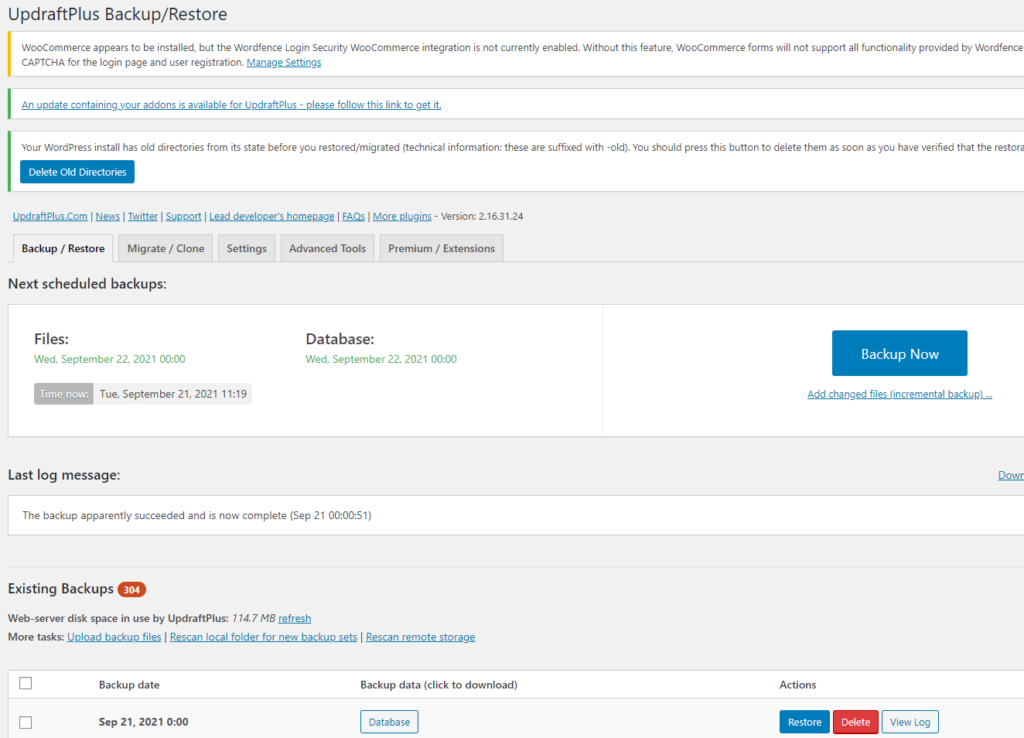
In the pop up box, make sure you click on the (…) to the right of the “Include your files in the backup”, and select all the options i.e. Plugins, Themes, Uploads etc.
Then, click “Backup Now”

STEP TWO: CHECK IT’S BACKED UP
Once the backup is complete, this shows that you have in fact backed up all the elements of your website.

STEP THREE: UPDATE PLUGINS
In the left panel menu, select “Dashboard” and then “Updates” from the dropdown menu.
In this screen, you will see all the WordPress updates available. Start with your Plugins by choosing “Select All” and click “Update”.
Sometimes you will get a message about WooCommerce needing updates, so click the “Update now” button; once that is done you can click the “Select All” tickbox again and then “Update Plugins” button.
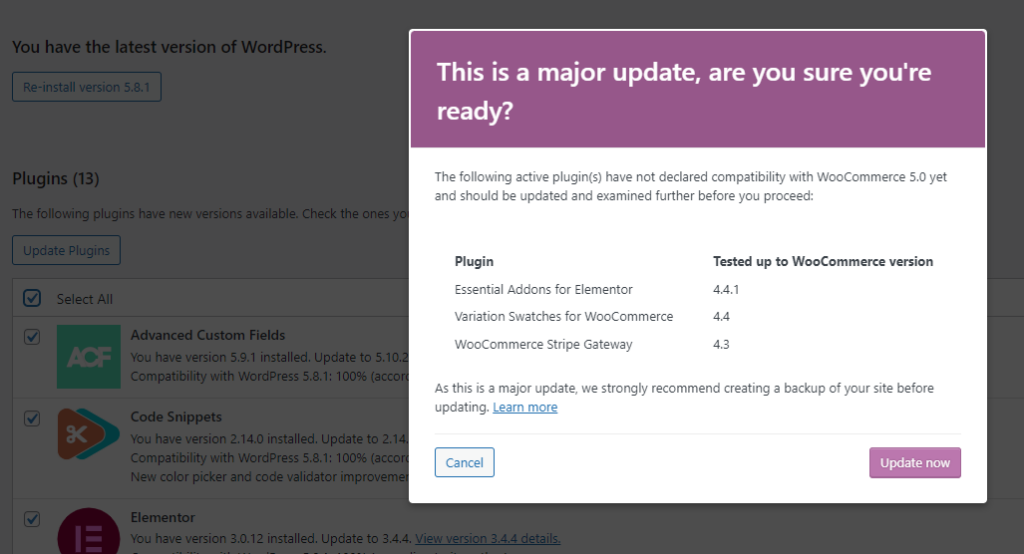
Typically your settings for UpDraft should automatically backup and remember this setting.
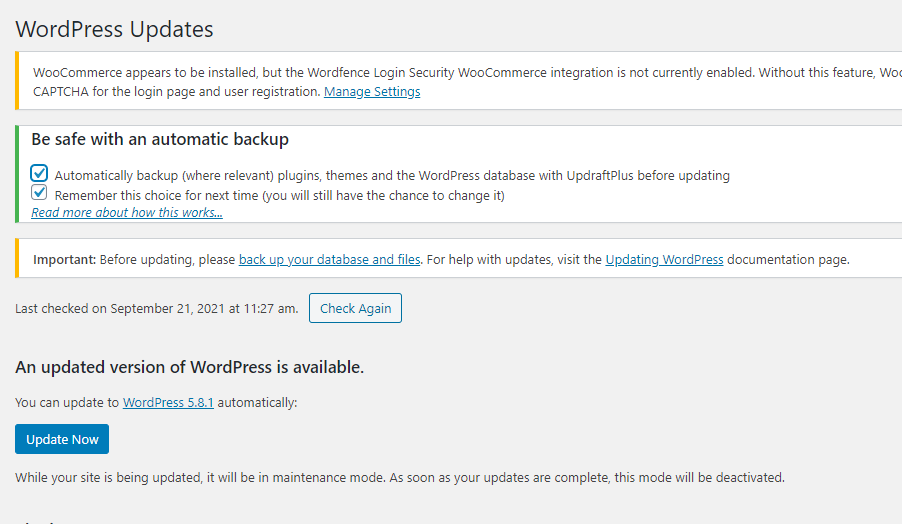
Deselect both because you have done a full backup, and this will save you time with the updates.

If you see this pop up message, select the “Click here to run it now” button.

STEP FOUR: UPDATE THEMES
As you did with the plugins, now you can update the Themes using the same process. Choose “Select All” and click “Update”.
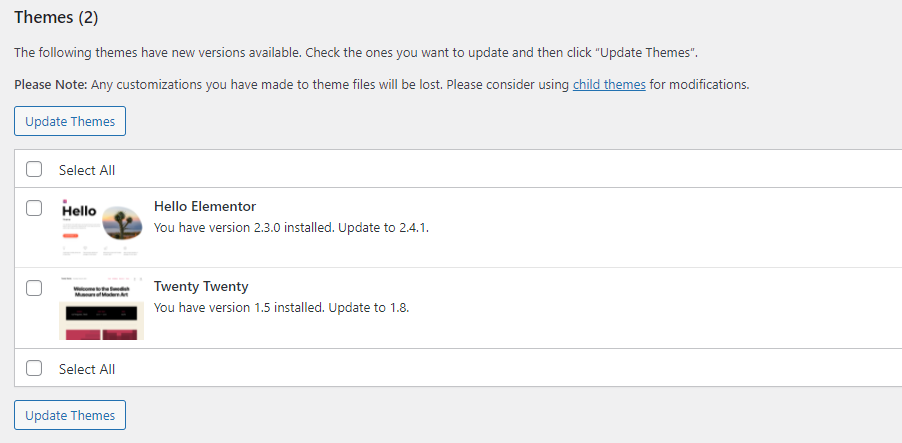
STEP FIVE: UPDATE WORDPRESS
If needed, you can run your WordPress update. Once updated, you might find new plugin updates appear, so you will have to run through those updates again.

STEP SIX: REGENERATE CSS
If the fonts on your website default back to the block font, you can regenerate the CSS files which should get it back to what it was before.
To do this, in the left panel menu, select “Elementor” and then “Tools” from the drop down menu.
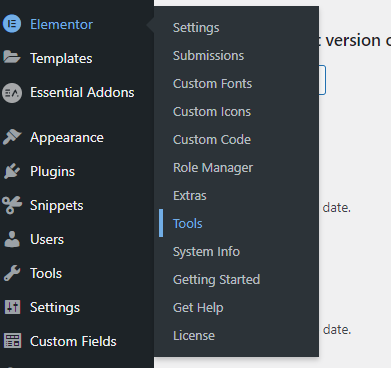
Click on the “Regenerate Files & Data” and the “Sync Library” buttons.

If you encounter any further issues with updating your website or are experiencing technical glitches due to the updates, email [email protected] to raise a ticket.
